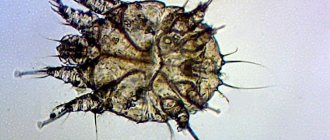The benefits of walking
Cats love walks in the fresh air. On the street, animals can fully demonstrate their habits and hunting instinct. They like to smell new smells and observe the world around them: birds, other animals, people.
In addition to the fact that walks outside are enjoyable, they are also extremely beneficial for the health of the animal.
- Walking has a positive effect on the immune system. Fresh air improves health. During physical activity in the fresh air, the body's immune forces are significantly enhanced.
- Cats that constantly sit at home and exercise little often suffer from cardiovascular diseases, excess weight, high blood pressure and other diseases. A cat that moves little becomes even lazier, eats more, lies down and sleeps. Walking outside awakens natural instincts and forces the animal to be more active.
- It has been noticed that after long street walks, the pet’s sleep improves. This is especially important if your pet likes to play at night and interferes with sleep at night.
- A good appetite is the key to health. Cats that regularly walk in the fresh air normalize their nutritional needs and appetite.
- Walking outside gives the animal exciting impressions and new experiences. Unfortunately, animals living within the same four walls often lack fresh emotions. Often, pets experience discomfort from boredom and monotony, and as a result they begin to spoil household things. Even quiet introverts will be interested in watching flying butterflies and birds outside.
Everyone knows that walking is beneficial for dogs and humans. But the situation with walking cats is not obvious to everyone. Why are cats walked much less often than dogs?
Cats do not need a special walk to go to the toilet. They behave differently on walks. There is even a feeling that the cat is comfortable at home without walking, and she does not need fresh air at all. The situation with walking cats is aggravated by the dangers that animals may encounter during walks.
What to do?
Walking on your own is a huge risk to the life and health of cats, that’s a fact. Therefore, if the owner is not able to provide safe walking, it is necessary to minimize the risks of “confinement within four walls.”
Cats are quite capable of adapting to life exclusively at home, especially if they have lived this way since childhood. And it is better to keep elderly and disabled cats exclusively at home. However, it is worth considering that cats accustomed to living outdoors may have difficulty adapting to indoor life, especially if brought into the home as adults (Hubrecht and Turner, 1998).
The increase in the number of cats kept as pets is in many cases due to people's perception that cats do not need to be walked and that they can live in a small space and be content with a litter box. However, to minimize the risks associated with keeping a cat indoors, it is necessary to provide the cat with 5 freedoms.
Indoor cats require more attention from their owner than cats that have access to the outdoors. This may be explained by the fact that these cats require additional stimulation because they live in a poorer environment (Turner and Stammbach-Geering, 1990). And the owner’s task is to create an enriched environment for the purr.
If you decide to provide your cat with access to the street, make sure that it is safe both for her and for other animals. For example, you can set up a safe area in your garden for your cat to walk from, where she cannot escape, or walk her on a leash.
Outdoor dangers for cats
There are indeed many dangers for cats on the street that you can’t turn a blind eye to and that you should prepare for before going outside. Knowing what can harm a pet's health will help the owner deal with potential threats.
- Ticks and fleas. These insects really pose a serious danger when walking. In addition, even pets that do not go outside are not immune from their appearance. There are cases when eggs of blood-sucking insects are brought into the house along with shoes. For pets that are outdoors, protection is required in 100% of cases. Walking an animal without taking protective equipment is highly discouraged. Such means can be specialized collars, drops, sprays. There are also tablets on sale that enter the bloodstream through the gastrointestinal tract, have insect repellent properties and thus provide reliable protection for a long time. The use of protective equipment in combination will most likely protect your pet from parasites. The choice of place for walking is also important. It is not recommended to walk the animal in fields and forests, where the greatest concentration of ticks is. The optimal places are cultivated urban areas: squares, parks, forest belts.
- Cars, other animals, children . Many owners do not let their pets go because they may be offended by unfriendly people, bitten by dogs, or accidentally run over by a car. Indeed, free-range animals are exposed to these dangers. Therefore, it is easiest to walk with a cat in uncrowded and quiet places. And walk the animal exclusively on a special harness.
- Infectious diseases. The factor of infectious diseases should be taken into account, since on the street, especially in places where stray animals gather, you can get infected. Cats that have not had vaccinations should not walk outside or have contact with other animals. Pets that do not have up-to-date vaccinations and have a weakened immune system are at increased risk for infectious diseases. If your cat does not have vaccinations or is sick, it is better to refrain from walking altogether.
- Wild rats and mice. It is known that wild rodents are often carriers of dangerous infectious diseases, including rabies. This threat is of particular importance for free-ranging animals. However, even if you walk your cat on a leash, you still need to get a rabies vaccination.
- Poison and abandoned food. Unfortunately, cases of intentional poisoning of animals are becoming more and more common. Scattered food poses a real threat to the health of pets. It is strictly forbidden to allow your cat to pick up treats, since any piece eaten can lead to severe poisoning, and in some cases, the death of the animal. And even if the food is not poisoned, there is a high probability of infection with worms.
Assessing the walking area
Before walking your cat for the first time, you need to walk the intended route yourself and evaluate it. So that there are no dogs on the way, ideally no other animals at all, and especially cyclists and cars. It is advisable to go for a walk in a park or on a fenced area with a lawn, where there will definitely not be shards of glass, garbage or any objects that could injure the animal. You should also avoid places where rodents are poisoned or garden plants that are toxic to cats, such as lilies, are planted. Another important point is that you should not let your cat go into tall grass; in summer there is a high probability of picking up fleas and ticks. By the way, it makes sense to vaccinate your pet and put on an anti-parasitic collar or treat it with anti-parasitic agents before walking your pet.
Future Research
The study authors indicated that all the information obtained can be used to conduct other studies of feline behavior. They hope that the general behavior of cats will continue to be studied and that people will put cameras on their pets' collars if they want to go outside to continue collecting information about the subject of the study.
You should forget about entertainment: what other restrictions does Lent have?
What offense did Alexandra Ursulyak not forgive her first husband and filed for divorce?
Separated work from life: why Justin Bieber put his phone aside
Where do cats go at night?
It's natural to wonder where the damn cats are at night? At home they usually sleep, play, cuddle, eat and sleep again. But what do they do at night when they are alone? It turns out quite a lot.
Researchers at the University of Georgia placed small cameras on 55 cats in the Atlanta area and then studied more than 37 hours of footage to look for trends.
Here are some key takeaways:
- 44% of cats hunted wild animals. Their main prey were reptiles, small mammals and invertebrates (things without internal skeletons...think spiders and slugs).
.
Proper feeding of your pet
Many cat owners prefer ready-made food. These products provide balanced, high-quality nutrition. But if it is not budget category food that contains harmful substances that lead to liver and kidney diseases. It is important to choose products that are appropriate for the age of the animal. For owners who do not have the opportunity to regularly purchase ready-made “extra” class food, it is better to feed the kitten with natural products, ensuring an optimal supply of all necessary microelements.
It is understandable to want from the heart to feed a hungry homeless animal. But you need to understand that street life does not contribute to the proper digestion process. Most likely, the system functions are impaired. At first, the cat needs to be fed dietary food. Volumes should be reduced, overeating during the period of getting used to homemade food is unacceptable.
Proper feeding will allow the body to adapt to a new diet without stress and will avoid stool disturbances and diarrhea, which can lead to dehydration.
Process
To conduct the study, cameras were placed in 21 cat collars. Everything they did for 4 years was recorded. Only 16 of them did not want to wear collars, the rest were calm about it and allowed the cameras to follow them everywhere and record their every movement for comparison. Pet owners could observe everything that the animals did while free. Although the study was largely focused on the predatory behavior exhibited by these animals, it was decided to focus on other activities of cats to find answers to questions about their methods of survival.
Arshavin's ex-wife lives illegally in a mansion: the footballer's mother is preparing a lawsuit
Aquadisco at the Moscow Zoo: penguins bursting soap bubbles (video)
Has a strong marriage cracked? Iker Casillas divorces wife Sara Carbonero
How to walk a cat: first steps to training
In order for a representative of the cat tribe to go out on every next walk calmly and without hysterics, it is necessary to do everything right from the very beginning. Arouse your pet's interest, and so that no negative associations are created.
How to put a harness on a cat or other equipment? The animal should be accustomed to new accessories in advance and gradually. First, put them next to the cat toys and let them smell, play, and get used to them. Next, you can try to put on the ammunition, but for a very short period of time. It is advisable to repeat this procedure every day for at least a week, gradually increasing the time. Ideally, after 7 days the pet will be able to walk quietly for a long time in a collar or harness.
After getting used to the equipment, you can let the cat out for a walk. Initially, it is better to pick up the animal and take it out into the yard, let it look around and only then lower it to the ground. It is important not to pull on the leash, not to force the owner to move at the desired pace and direction; after all, a cat is not a dog. The cat must sniff everything, scout, examine, only then will it begin to obey the movements of the leash. Again, the walk should not be delayed; the time on the street should be increased gradually. If you do everything correctly, without shouting or prodding, then walking with a cat will bring sincere pleasure to both the animal and its owner.
Vaccinations for a selected pet
Cats need vaccinations. It will provide protection against common diseases. The timing of drug administration and dosage must be determined by a veterinarian. Please note that vaccinations are given only to healthy cats that have been treated for worms. You need to go to a veterinary hospital after the end of quarantine. Pets are vaccinated against:
- calicivirus;
- rhinotracheitis;
- chlamydia;
- panleukopenia.
Nowadays complex preparations containing components for vaccination against all common diseases are used. 2 vaccinations are required with an interval of 4 weeks. Rabies vaccination is done annually. There are new drugs with a validity period of 3 years.
Get rid of fleas
Determine approximately how many months the kitten is and treat it with a suitable product. The price of the drug does not matter. Keep in mind: expensive, cheap and simply popular drugs are often counterfeited. You can check with domestic manufacturers whether the retail outlet is part of the network of official suppliers, and if in doubt, call the hotline and find out whether the company produced a specific series.
Note that veterinarians advise conducting an initial examination before washing a street kitten - perhaps after water procedures, one of his diseases, for example, lichen, which is not visible to the eye, will worsen.
If the kitten needs to be washed, choose a flea shampoo. If bathing is not necessary, use drops. A day or two after treatment, you need to select and give an anti-worm drug to a kitten from the street based on weight and age, and repeat after 10 days.
Suitable medications are those that act on the larval forms of Toxocara, the most common helminth in Russia. For the first treatment, a combined preparation is selected in the form of drops on the withers. It will free your pet from fleas, ear mites and most helminths. Then you need shampoo without an anti-flea component.
Sounds cats make at night
Besides the obvious sound of a cat fight, one of the main times you might hear a cat is when they want to be heard, such as when they are looking for food or a cat or cat to mate with.
Why do cats howl at night?
Excessive vocalization can be caused by any of a variety of factors. If your cat howls at night, it may not be a cause for concern, but you shouldn't ignore the behavior either.
Here are some of the most likely causes of howling:
- Old age: Howling in older cats may be a consequence of feline cognitive dysfunction syndrome, also known as feline dementia.
- Boredom: A domestic cat that has little opportunity to exercise or play may howl excessively because it is bored.
- Stress: Sudden changes in a cat's daily life—such as the birth of a baby or a recent move—can stress a cat and cause it to sing.
- Health concerns: If you can rule out other causes of your cat's howling, it's time to visit your veterinarian. Your veterinarian will need to examine and check your cat's blood pressure—and possibly collect blood and urine for testing—to look for underlying conditions, such as: High blood pressure (hypertension)
- Excess thyroid hormone (hyperthyroidism)
- Blindness
- Kidney disease
- Cystitis
- And many other possible reasons
An important note regarding vocalizations: If your cat vocalizes and tenses while using the litter box, take her to the vet immediately!
This could be a sign of urinary obstruction, which is not only painful and distressing for your cat, but can also be fatal if veterinary help is not sought promptly.
Monitoring a cat during quarantine
During the quarantine period, the kitten must be closely monitored. Important indicators are appetite, consistency, and color of stool. There should be no foreign inclusions, impurities, blood or purulent discharge in feces and urine. You should pay attention to the mucous membranes of the eyes and mouth. They should have a light pink tint. The appearance of a yellow, bluish color is the reason for a visit to the veterinarian. You need to go to the hospital if you experience:
- lack of appetite;
- loss of shine on the coat;
- depressed state;
- temperature increase.
If no negative signs appear within two to three weeks, then you can stop quarantine, allow the kitten to move freely around the apartment, and get to know other pets.
House against the street
When cats are indoors, they feel safe and are likely to sleep all the time, confident that they will not be attacked by other animals or contract diseases.
However, keeping your pet indoors all the time can cause stress and dependency when you're not home. Allowing your cat to go outside can benefit its development, teach it to exercise, and improve its mental health while allowing it to do other things.
Why do cats fight at night?
There are two main reasons that lead to cat fights. When cats roam neighborhoods and city streets, they will fight when there is competition for food or a mate.
In many places, these encounters are more likely because the cat's territory is shrinking as areas become more dense.
And these chance encounters are more likely in the pre-dawn and post-twilight hours, when cats go hunting.
Abscesses from cat bites from cat fights
Unfortunately, cat fights can be quite brutal, leading to scratches and abscesses from cat bites and even spreading diseases (more on this below). A cat bite abscess results in the formation of a soft, swollen sore under the cat's skin.
It may take several days before you notice it. To make matters worse, abscesses from cat bites can burst and ooze pus. You may not notice an abscess from a bite until it starts to swell, but there are additional signs that may indicate a problem.
Signs that may indicate a cat bite abscess:
- Heat
- Decreased appetite
- Decreased energy levels
Although some cat bite abscesses can rupture and then heal on their own with home care, these injuries are best treated by your veterinarian.
Start studying
Scientists at the University of Derby have launched a study to provide and confirm the relationship between behavior and action in cats. It all started when one of the researchers' pet came home one day with a hawk in its mouth. This was surprising to everyone because the bird was almost the size of a cat. Faced with this uncertainty, where it was not clear whether the pet caught a bird or picked it up on the road, the owner wanted to check what the cat was doing outside the house. He bought a camera and discovered that the cat was not behaving at all as he expected. This made him want to keep an eye on his pet, so he decided to conduct a scientific study to find more answers.











